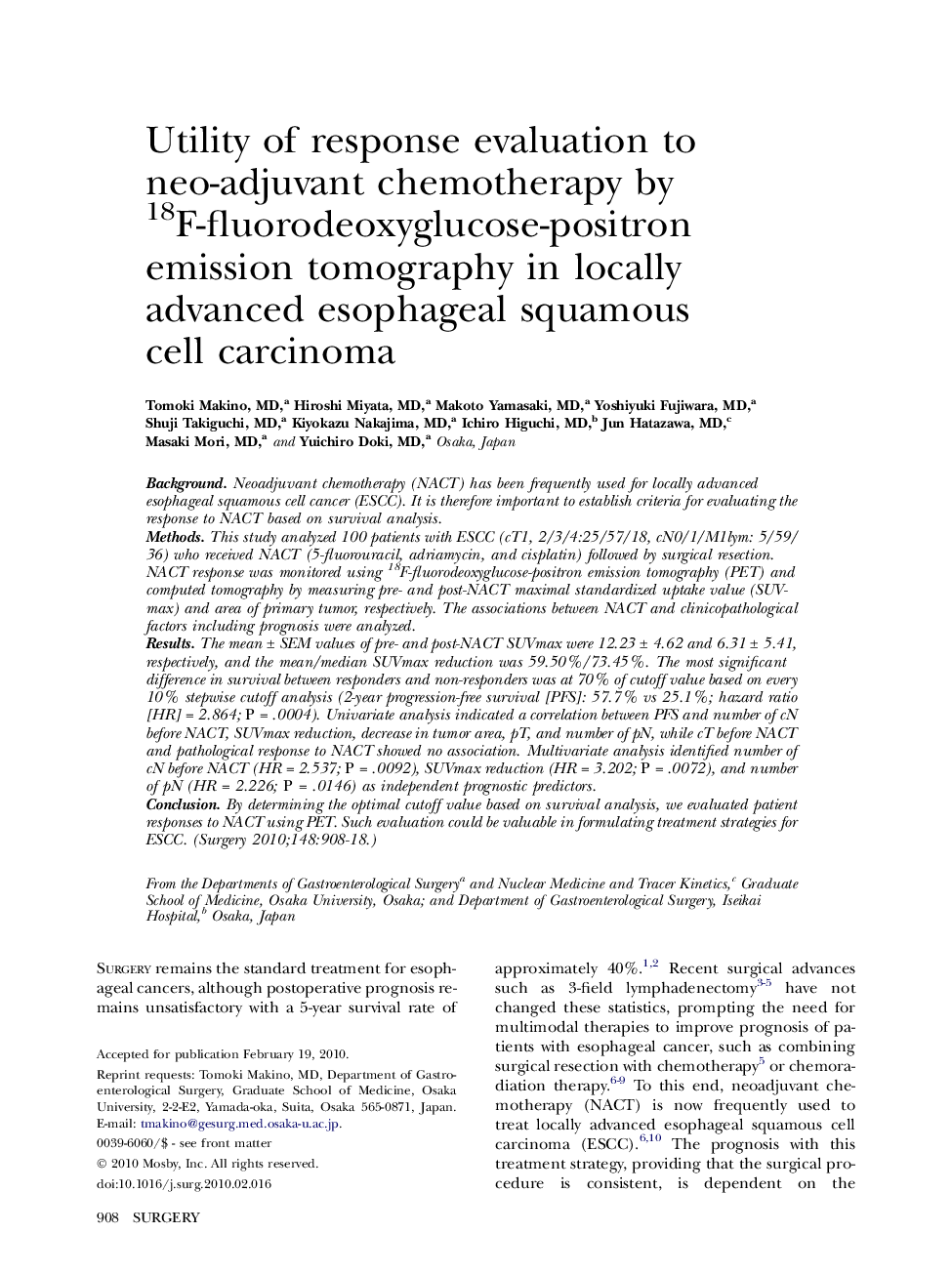| Article ID | Journal | Published Year | Pages | File Type |
|---|---|---|---|---|
| 4308939 | Surgery | 2010 | 11 Pages |
BackgroundNeoadjuvant chemotherapy (NACT) has been frequently used for locally advanced esophageal squamous cell cancer (ESCC). It is therefore important to establish criteria for evaluating the response to NACT based on survival analysis.MethodsThis study analyzed 100 patients with ESCC (cT1, 2/3/4:25/57/18, cN0/1/M1lym: 5/59/36) who received NACT (5-fluorouracil, adriamycin, and cisplatin) followed by surgical resection. NACT response was monitored using 18F-fluorodeoxyglucose-positron emission tomography (PET) and computed tomography by measuring pre- and post-NACT maximal standardized uptake value (SUVmax) and area of primary tumor, respectively. The associations between NACT and clinicopathological factors including prognosis were analyzed.ResultsThe mean ± SEM values of pre- and post-NACT SUVmax were 12.23 ± 4.62 and 6.31 ± 5.41, respectively, and the mean/median SUVmax reduction was 59.50%/73.45%. The most significant difference in survival between responders and non-responders was at 70% of cutoff value based on every 10% stepwise cutoff analysis (2-year progression-free survival [PFS]: 57.7% vs 25.1%; hazard ratio [HR] = 2.864; P = .0004). Univariate analysis indicated a correlation between PFS and number of cN before NACT, SUVmax reduction, decrease in tumor area, pT, and number of pN, while cT before NACT and pathological response to NACT showed no association. Multivariate analysis identified number of cN before NACT (HR = 2.537; P = .0092), SUVmax reduction (HR = 3.202; P = .0072), and number of pN (HR = 2.226; P = .0146) as independent prognostic predictors.ConclusionBy determining the optimal cutoff value based on survival analysis, we evaluated patient responses to NACT using PET. Such evaluation could be valuable in formulating treatment strategies for ESCC.
